European
Southern
Observatory
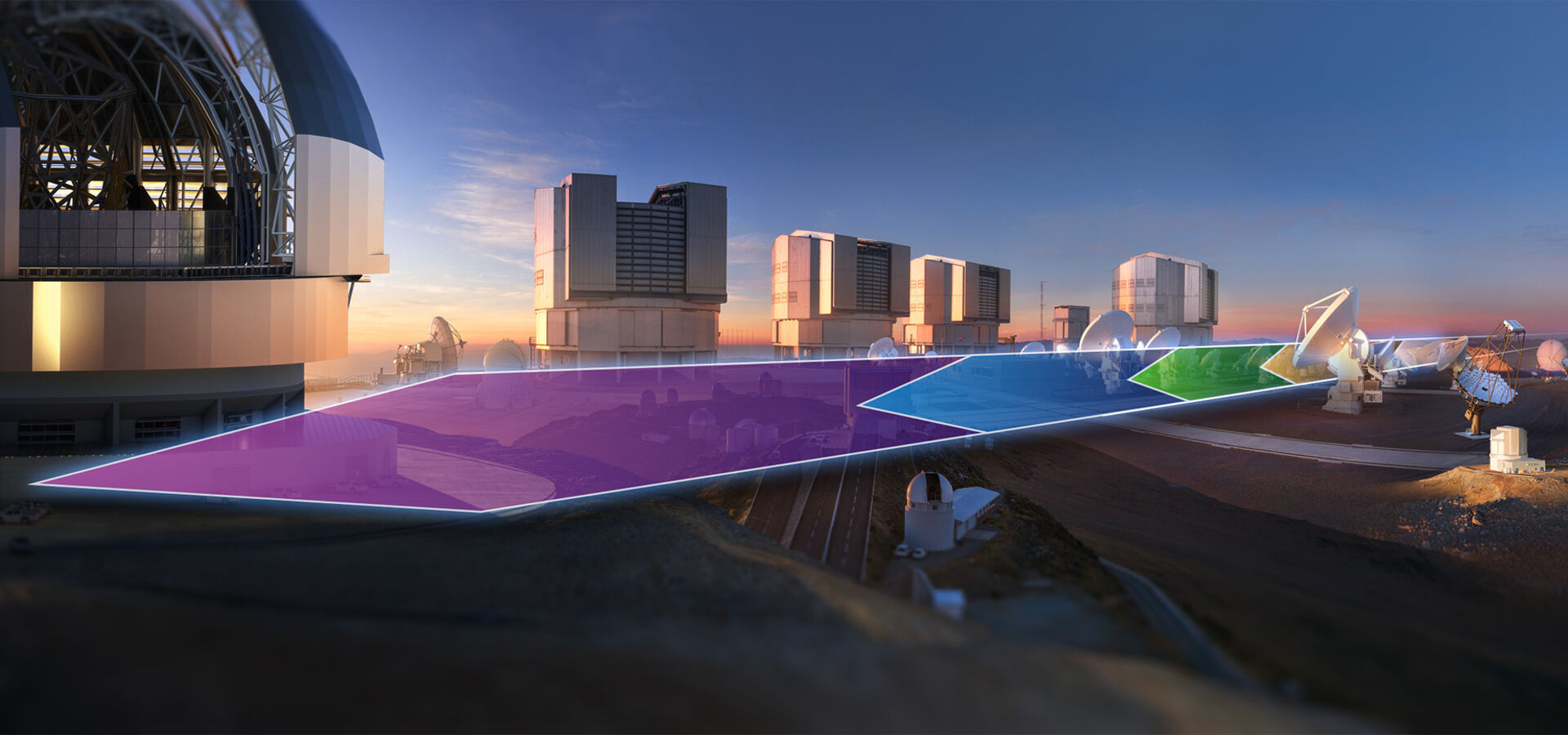
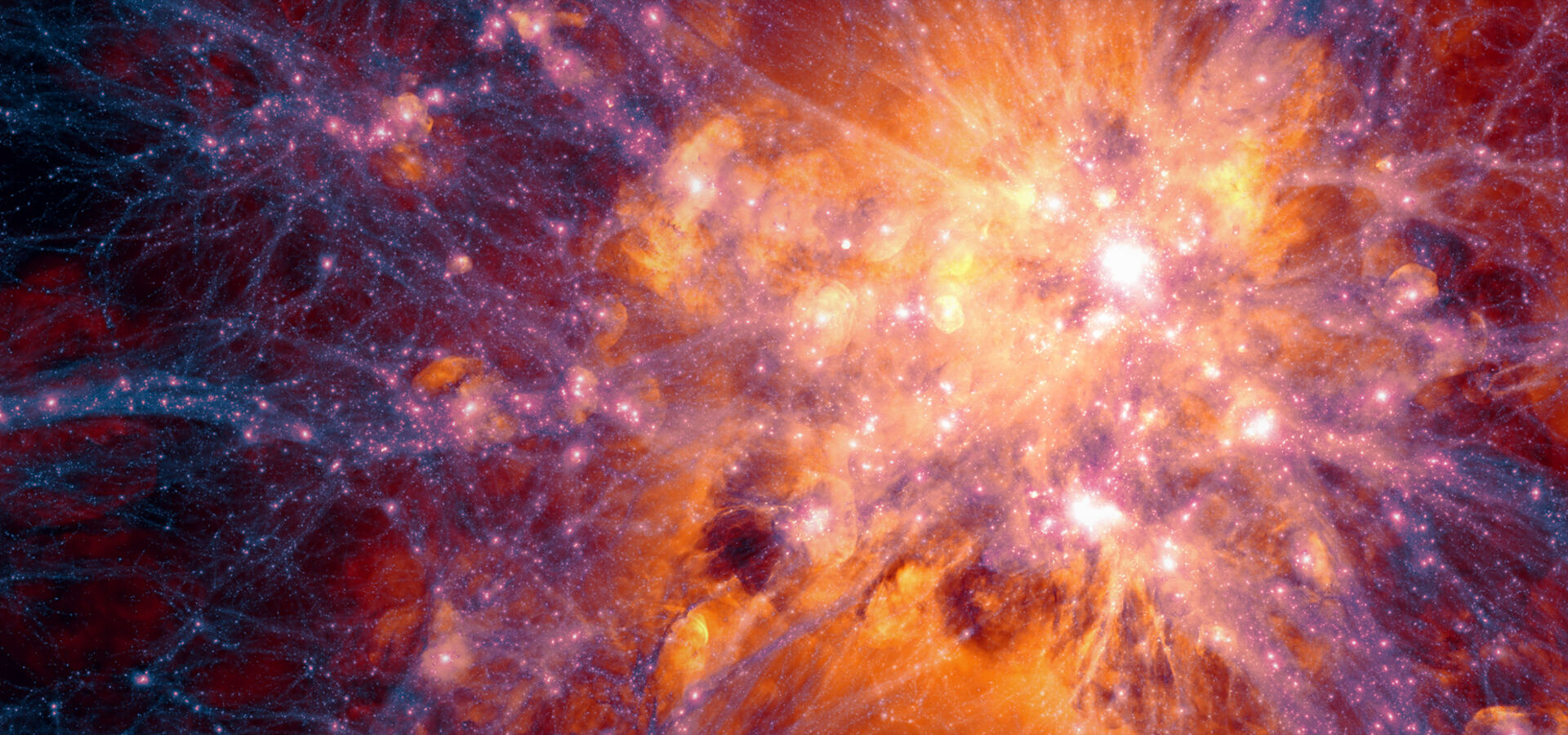
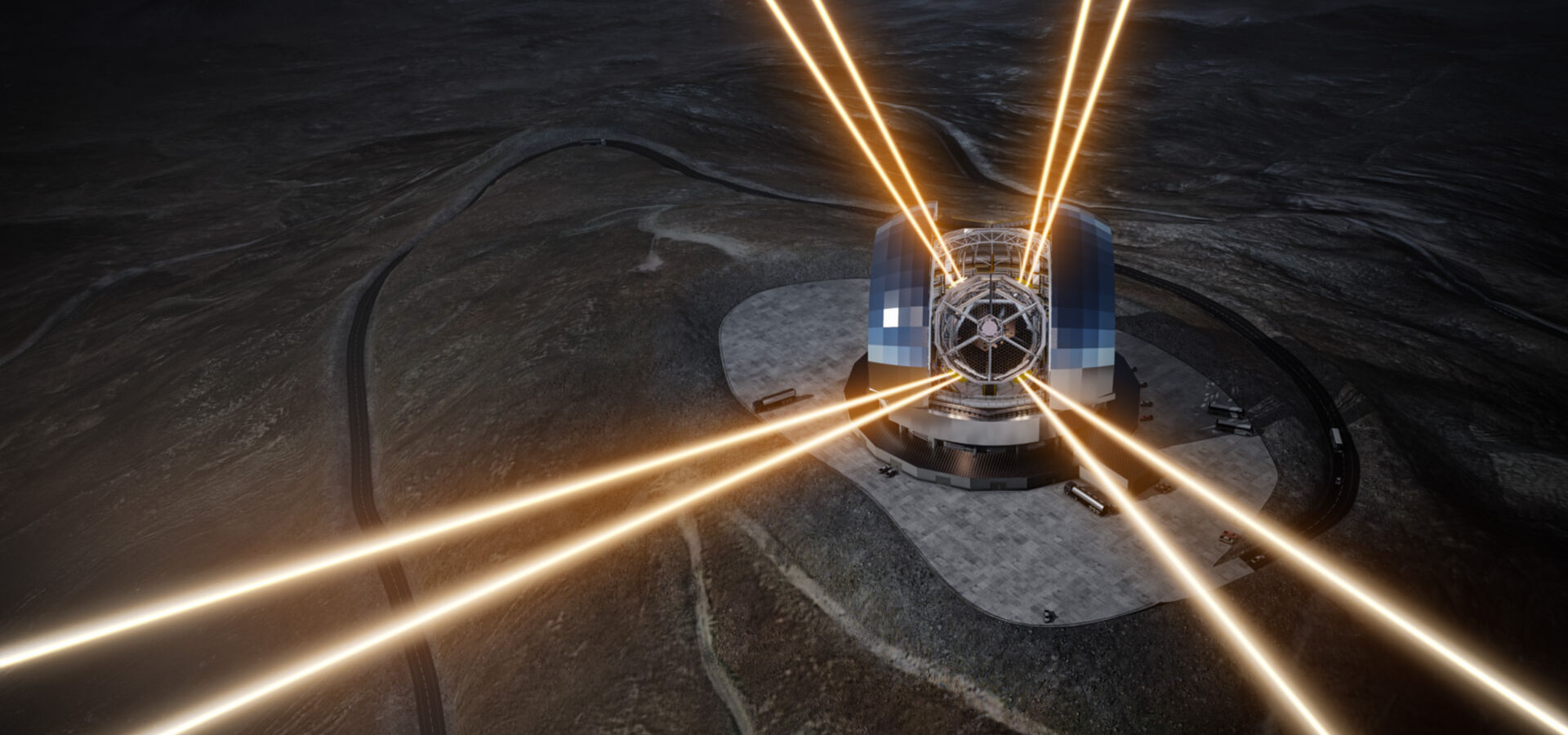
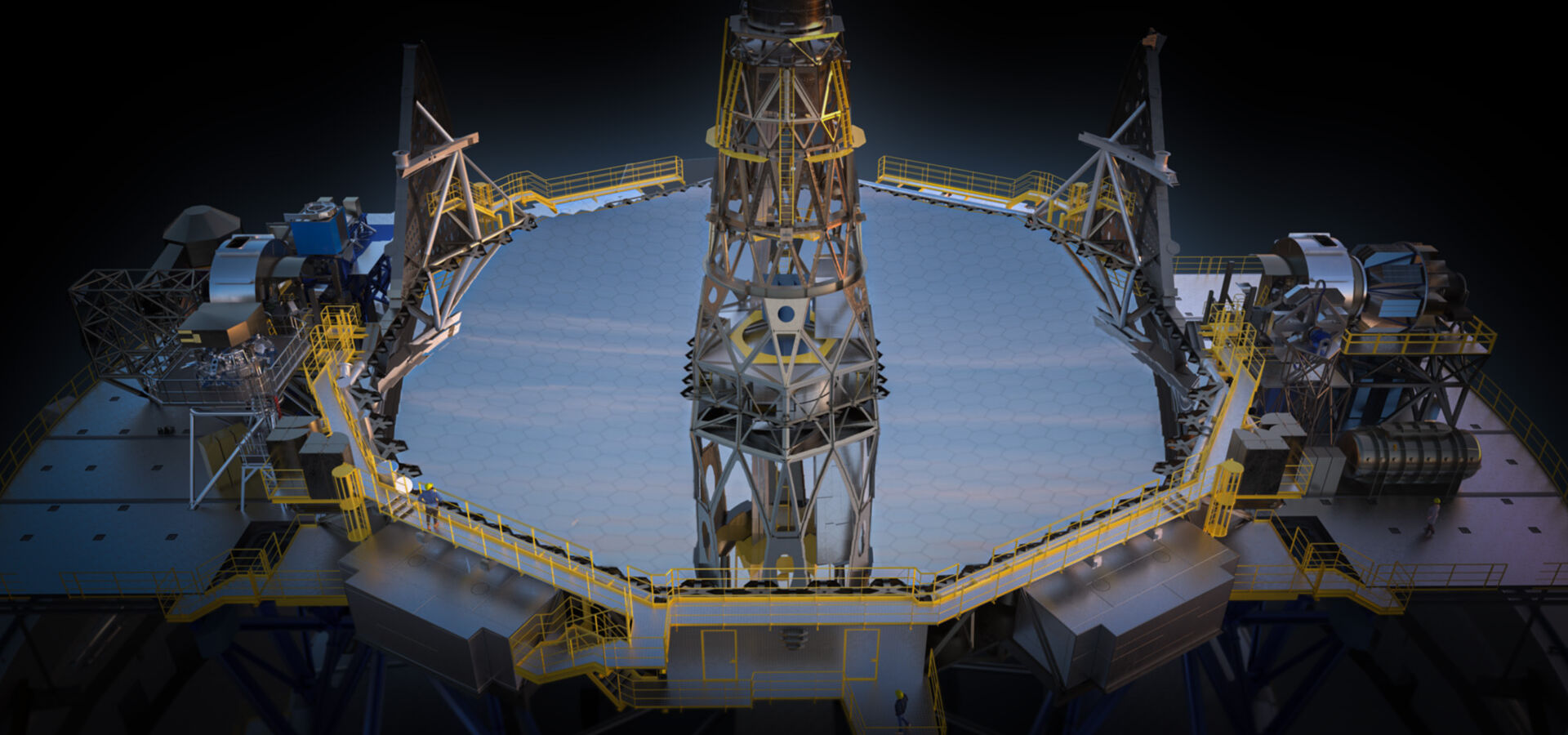
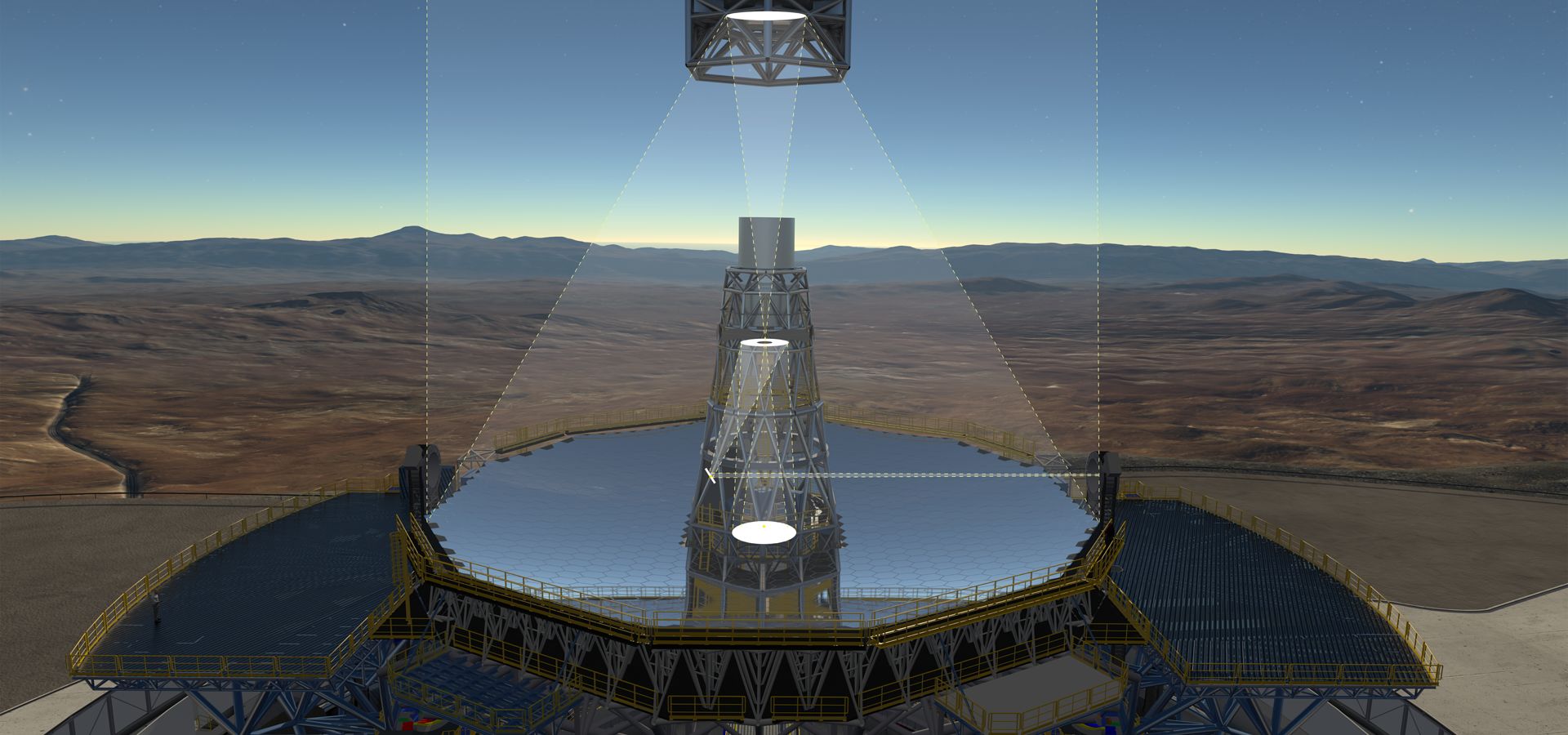
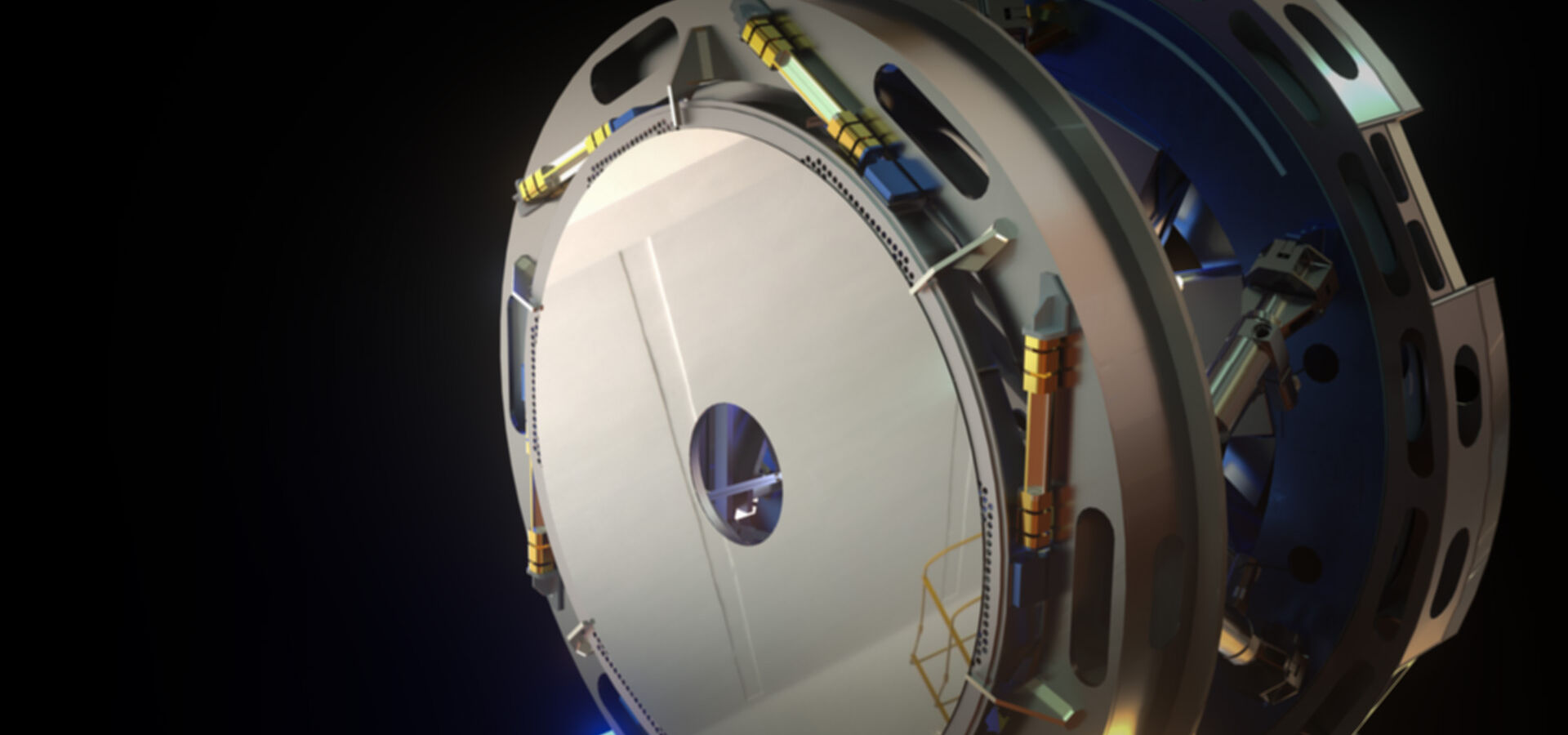
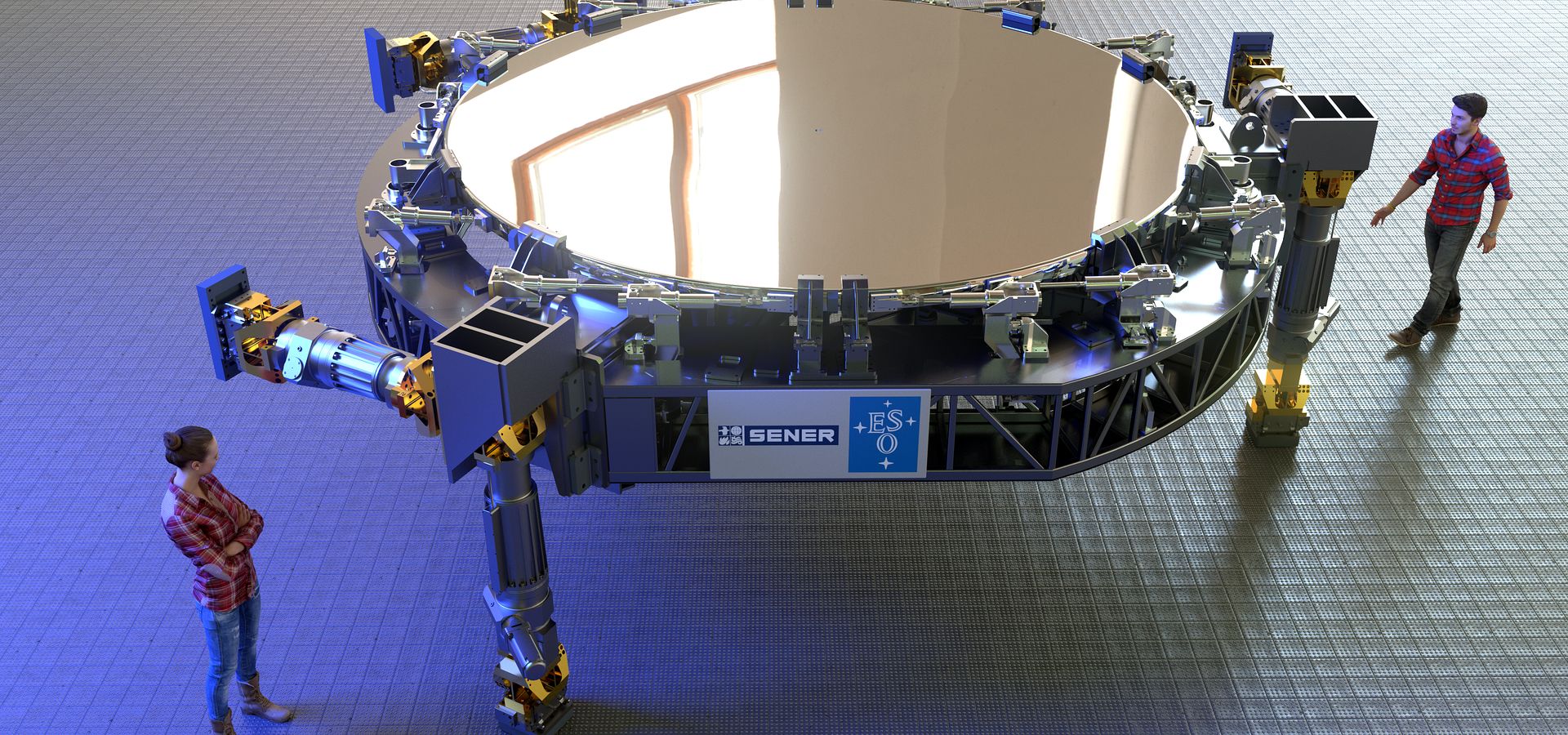
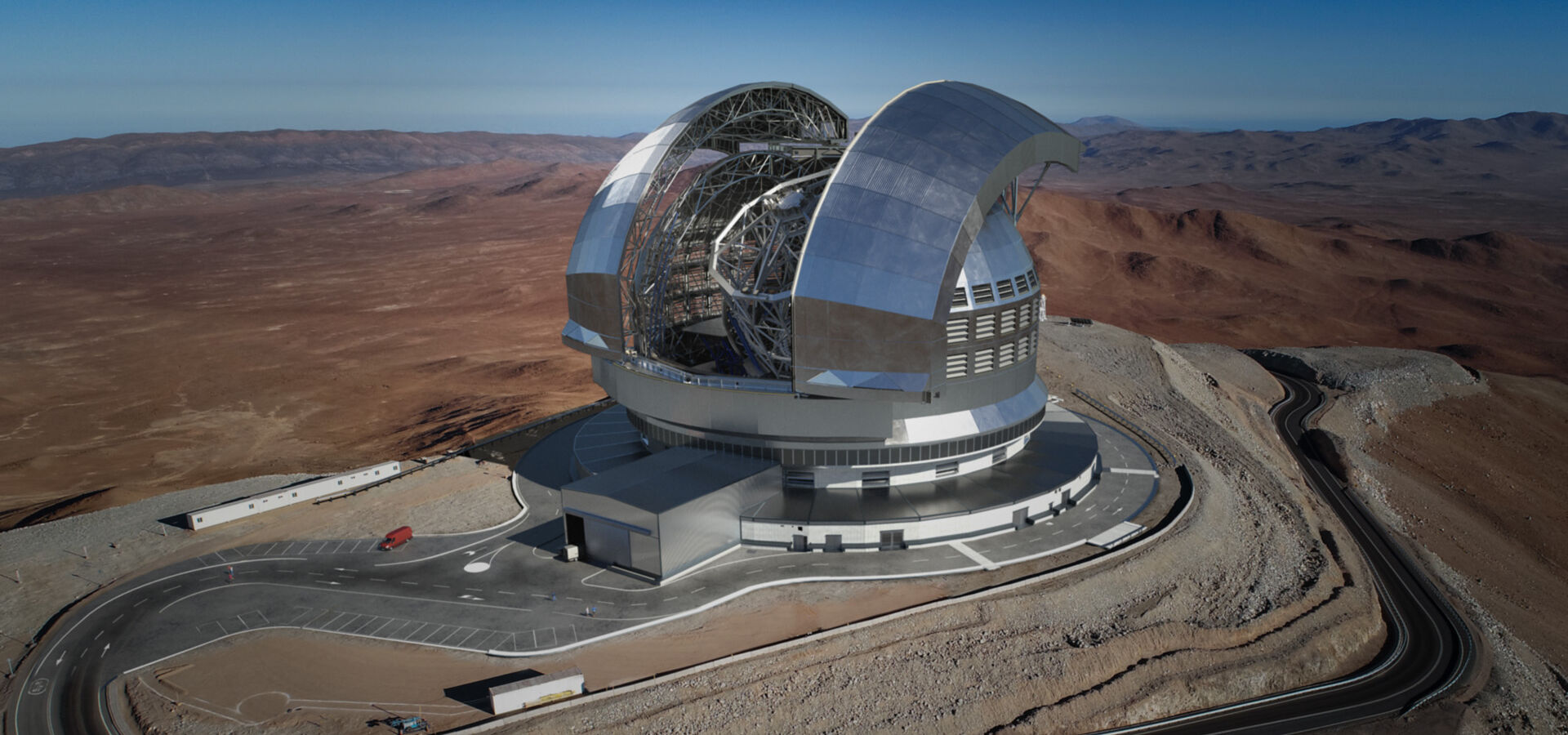
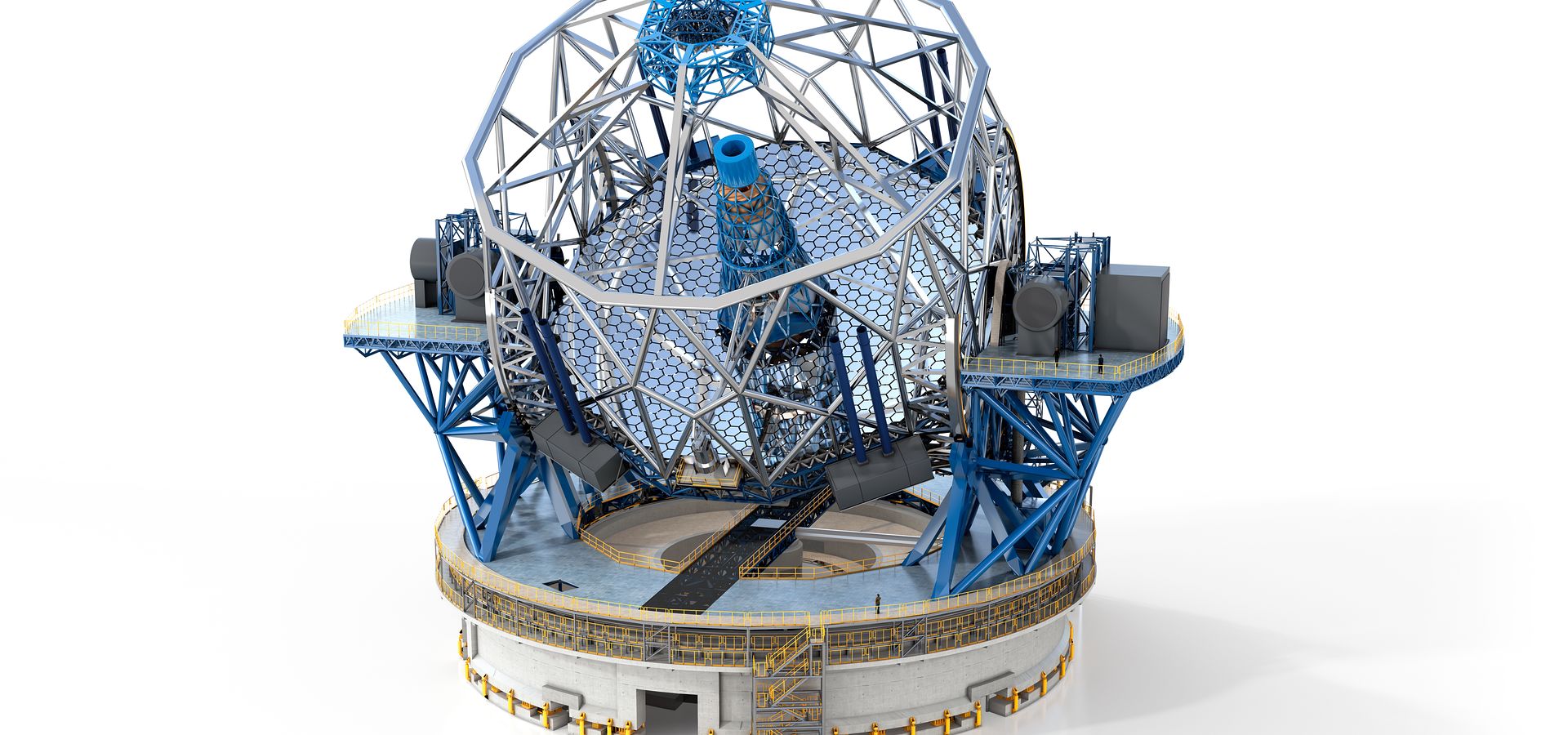
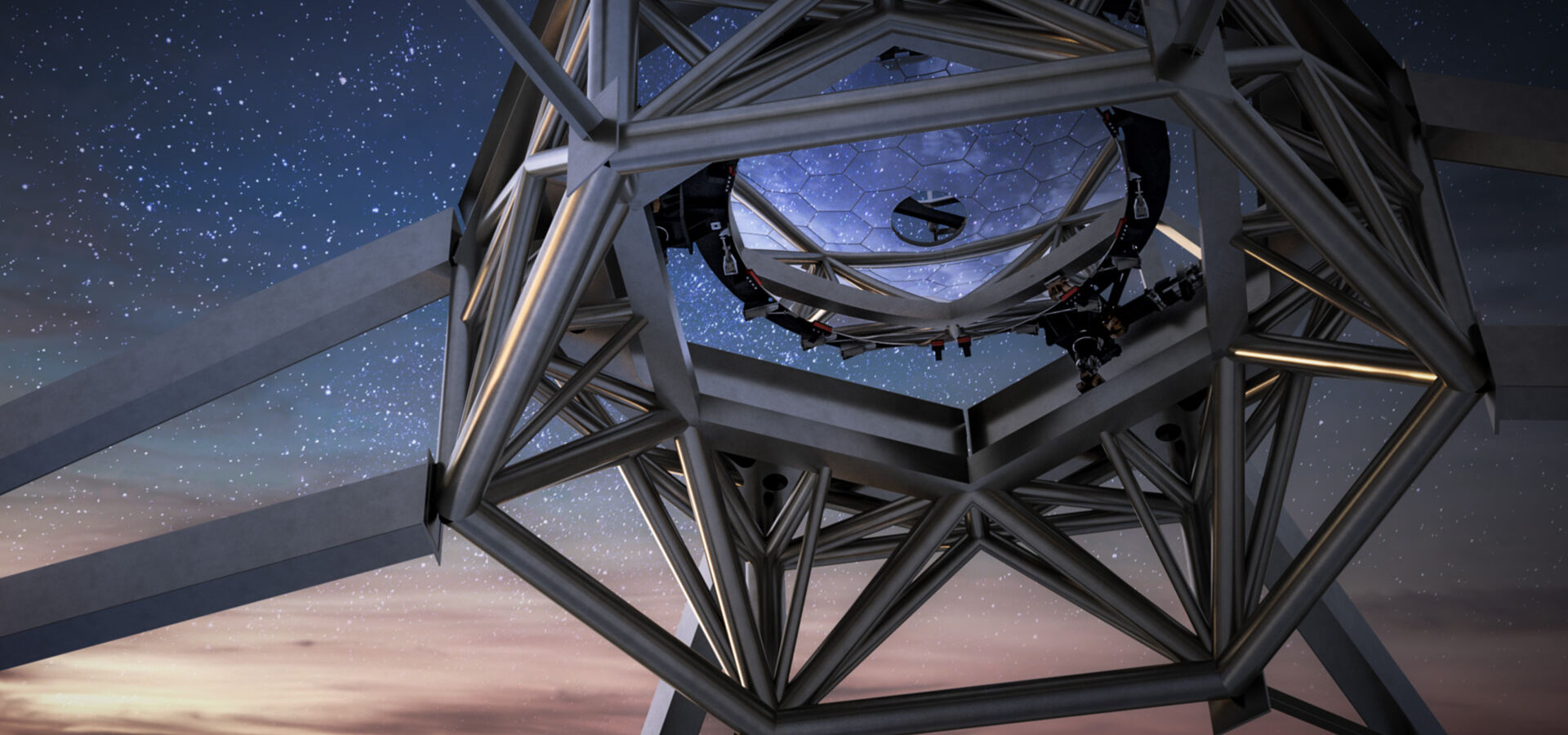
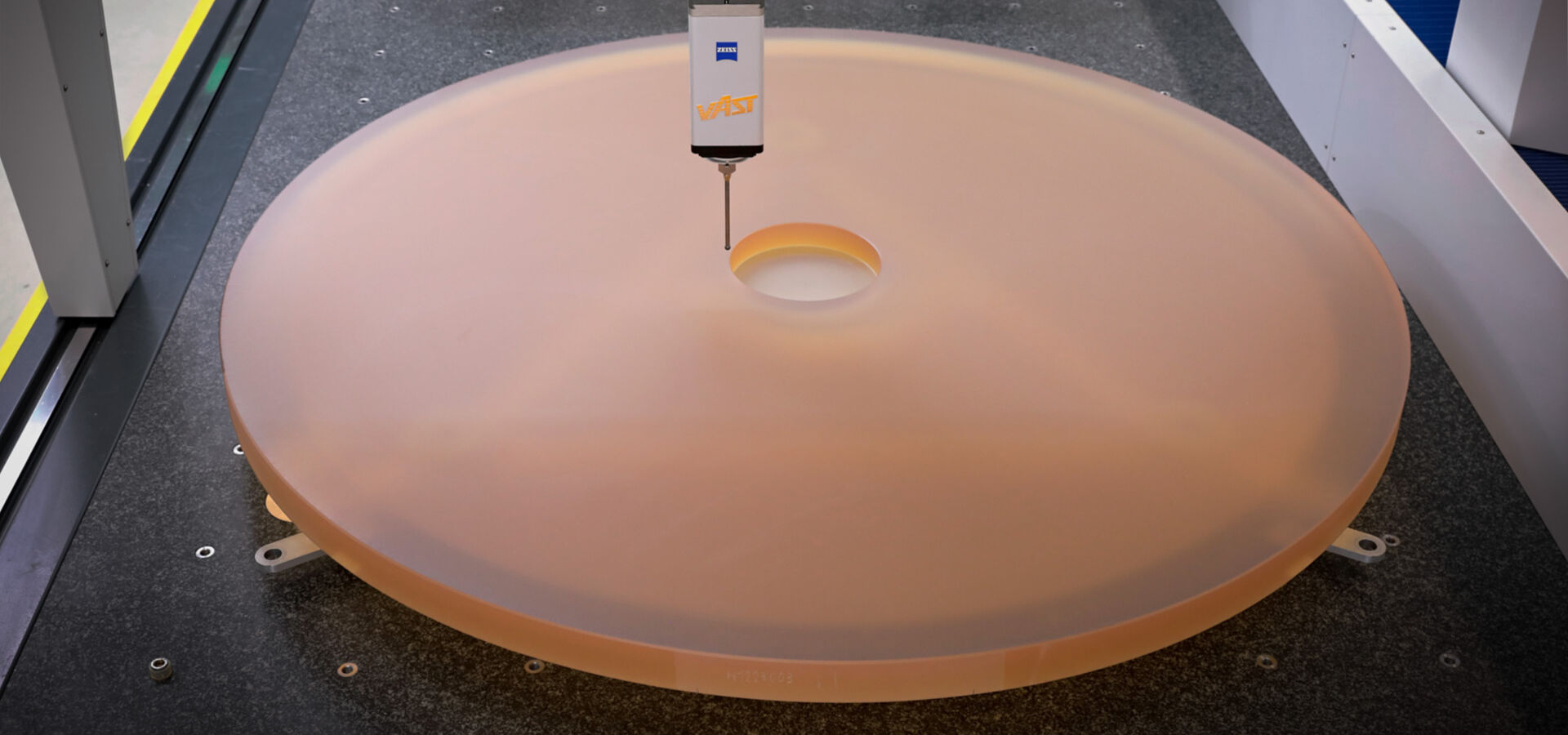


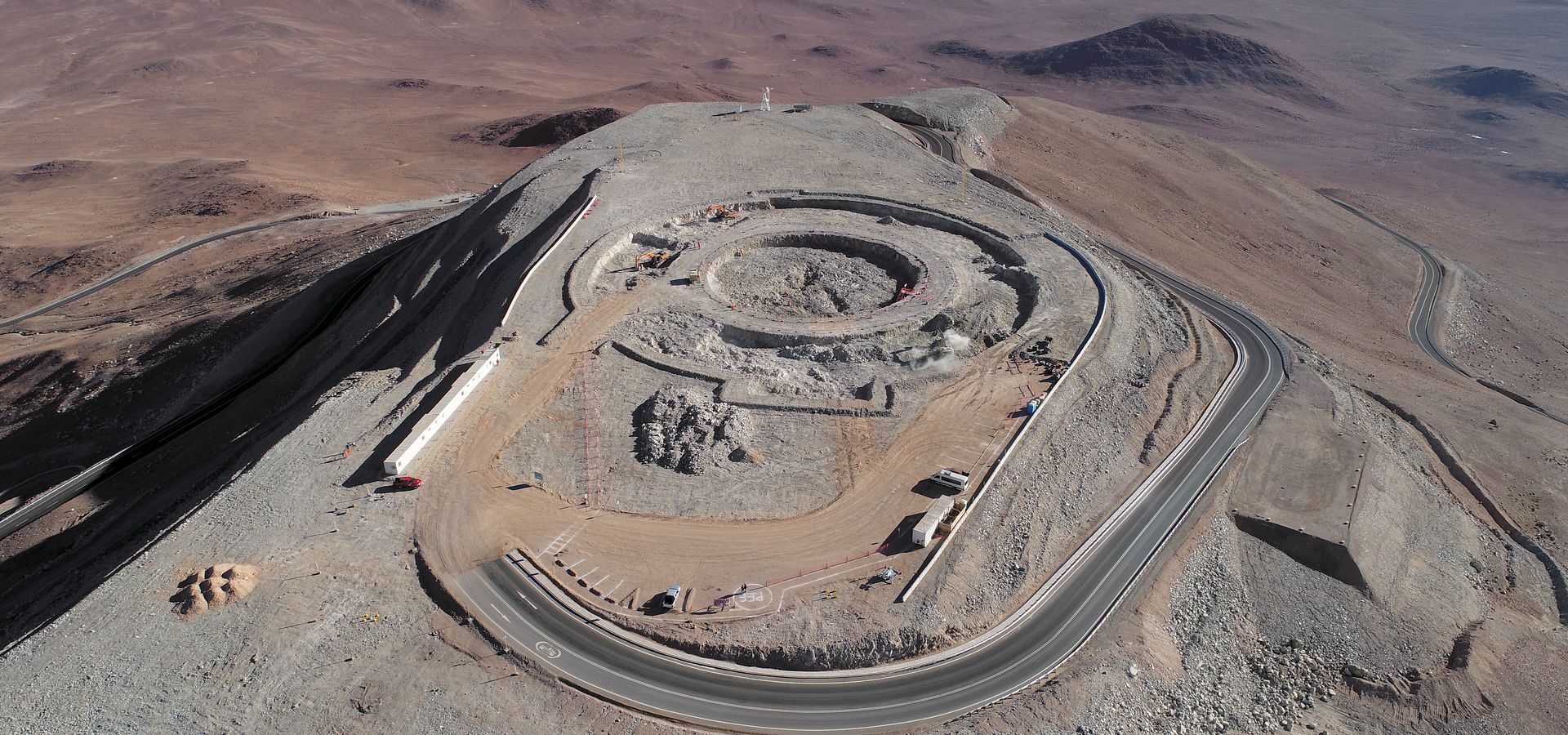
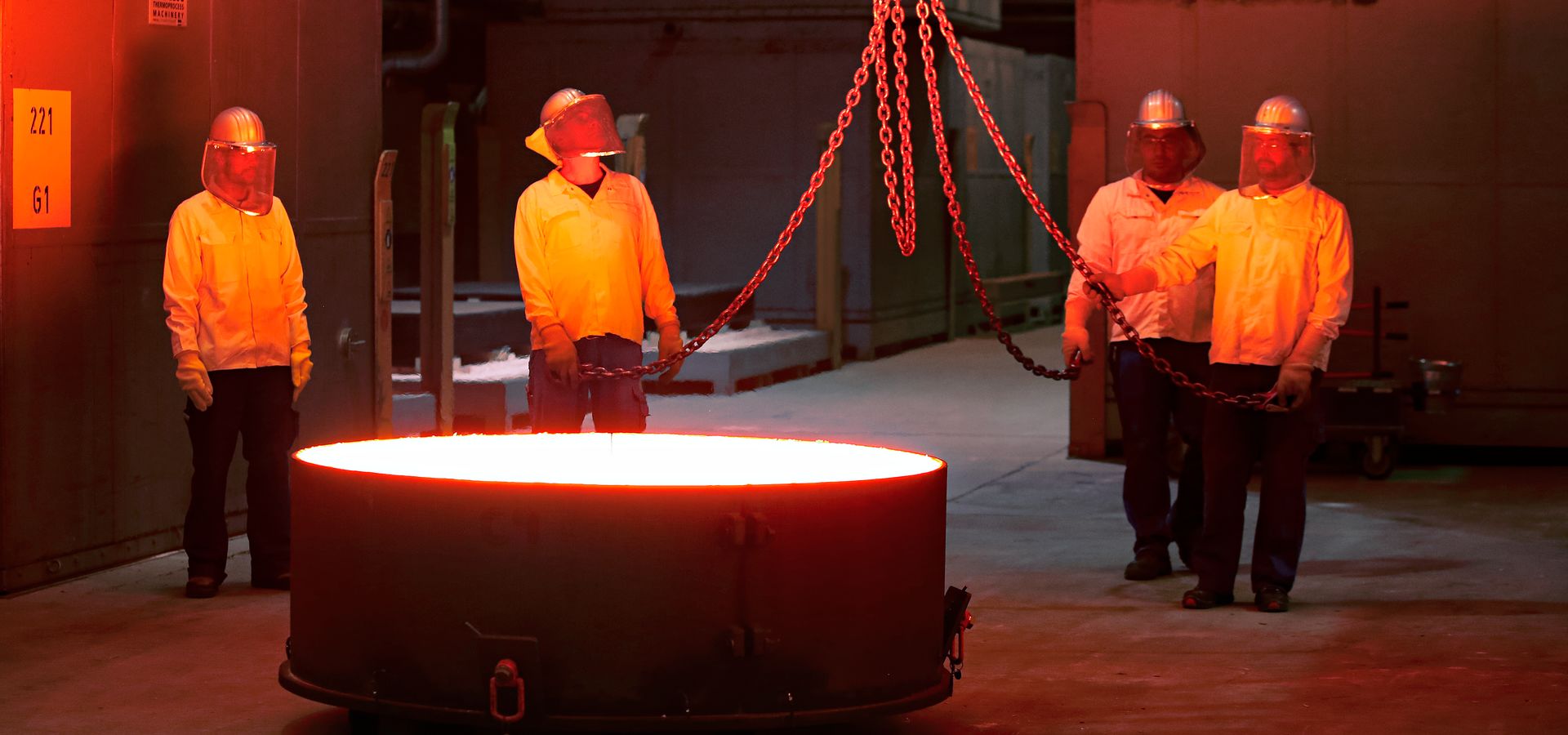
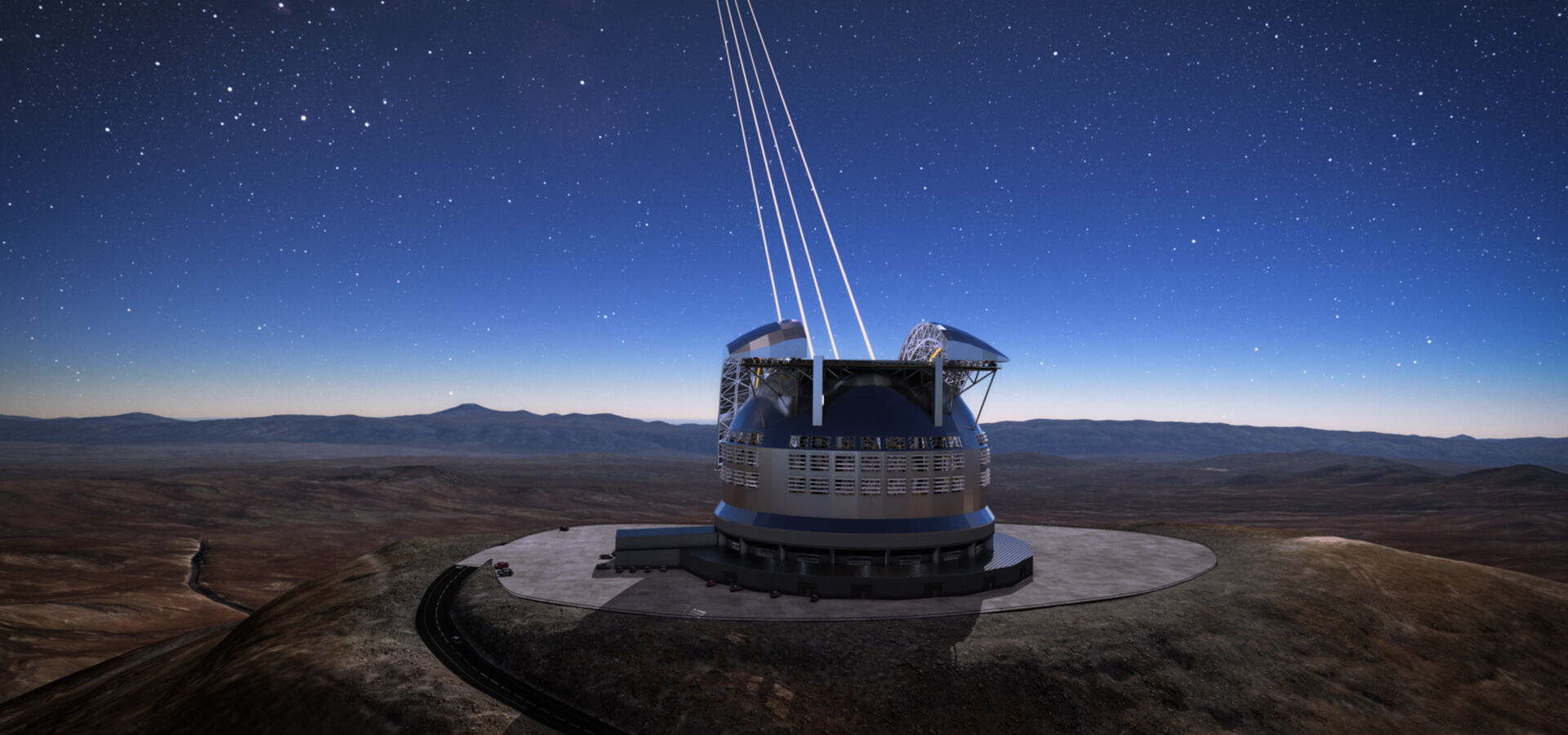
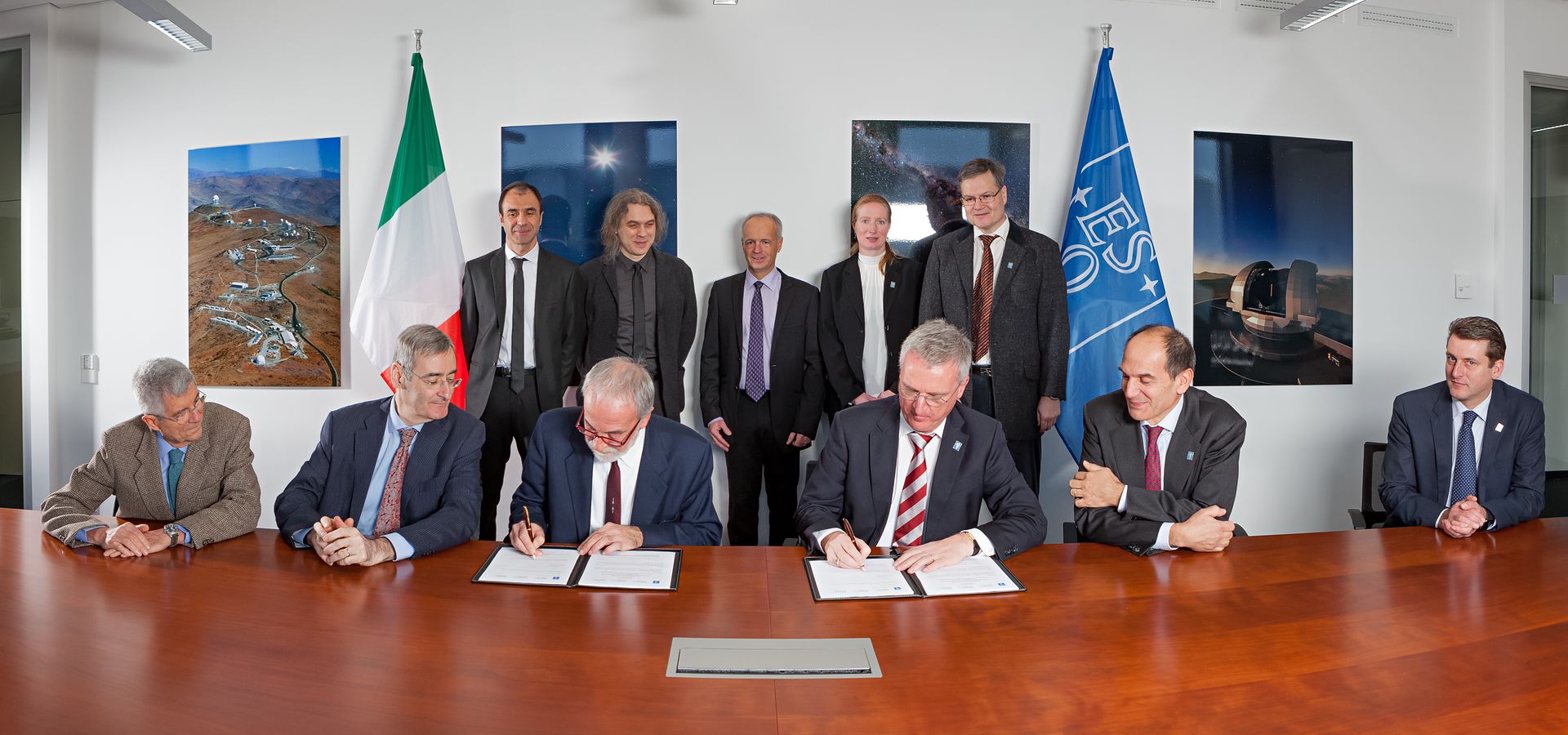
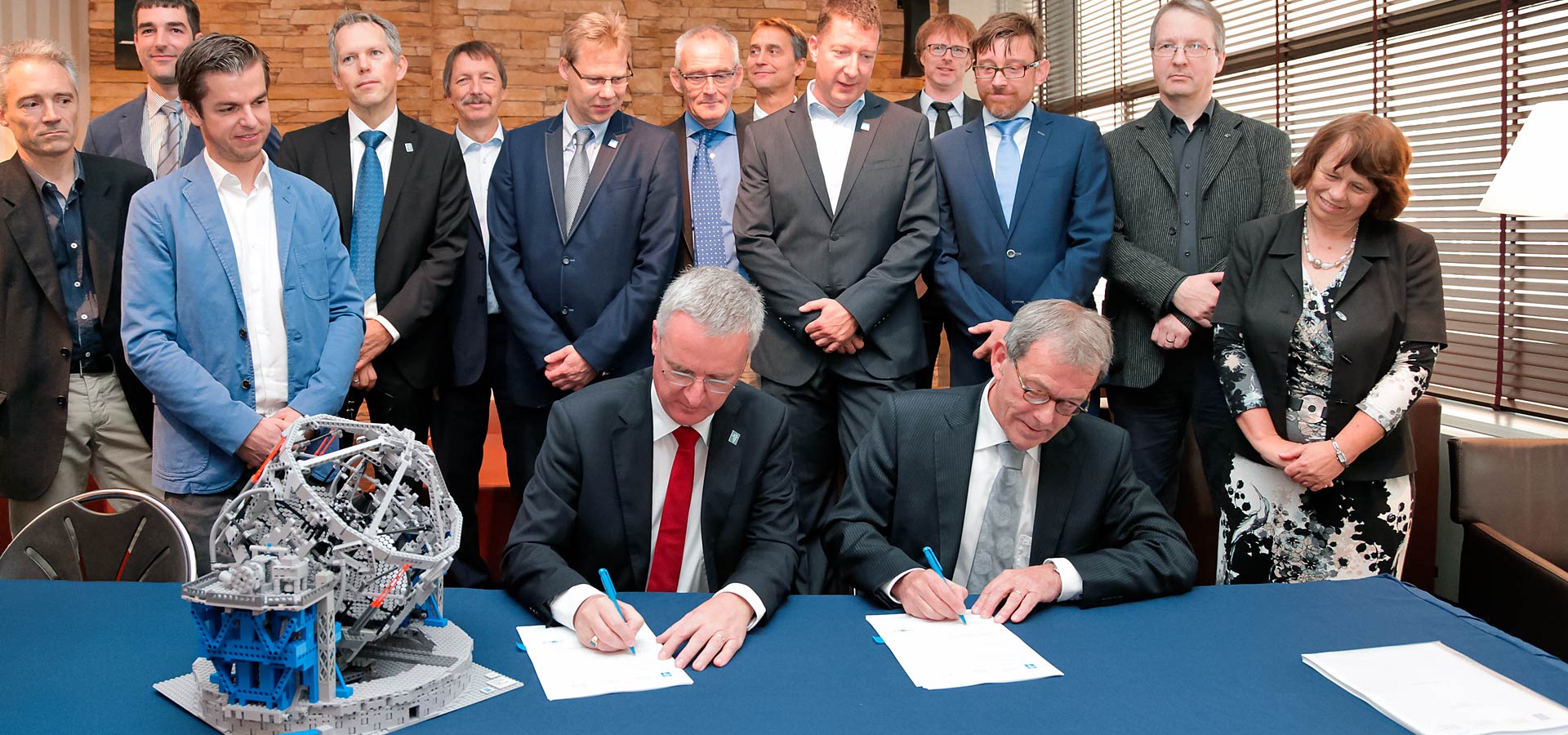
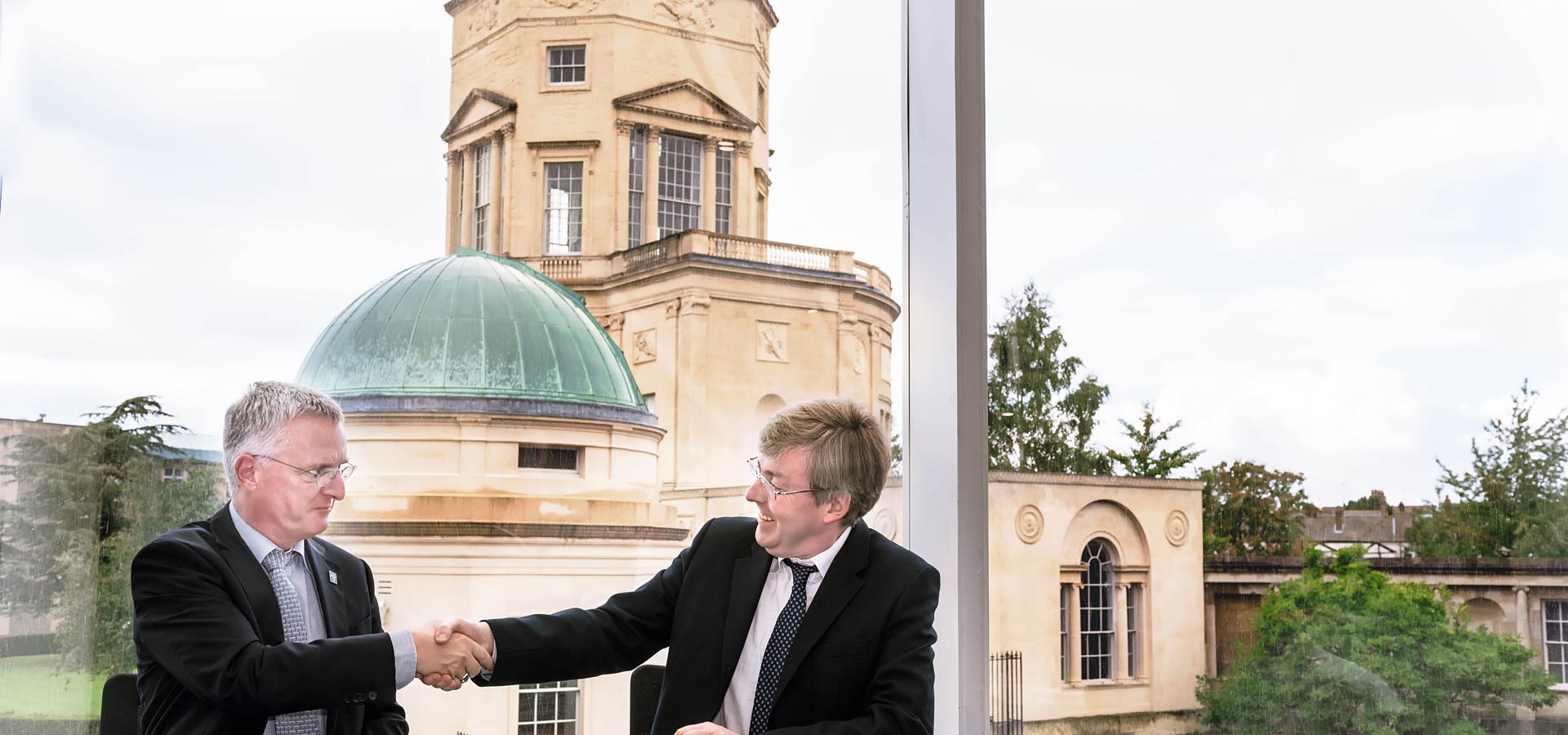
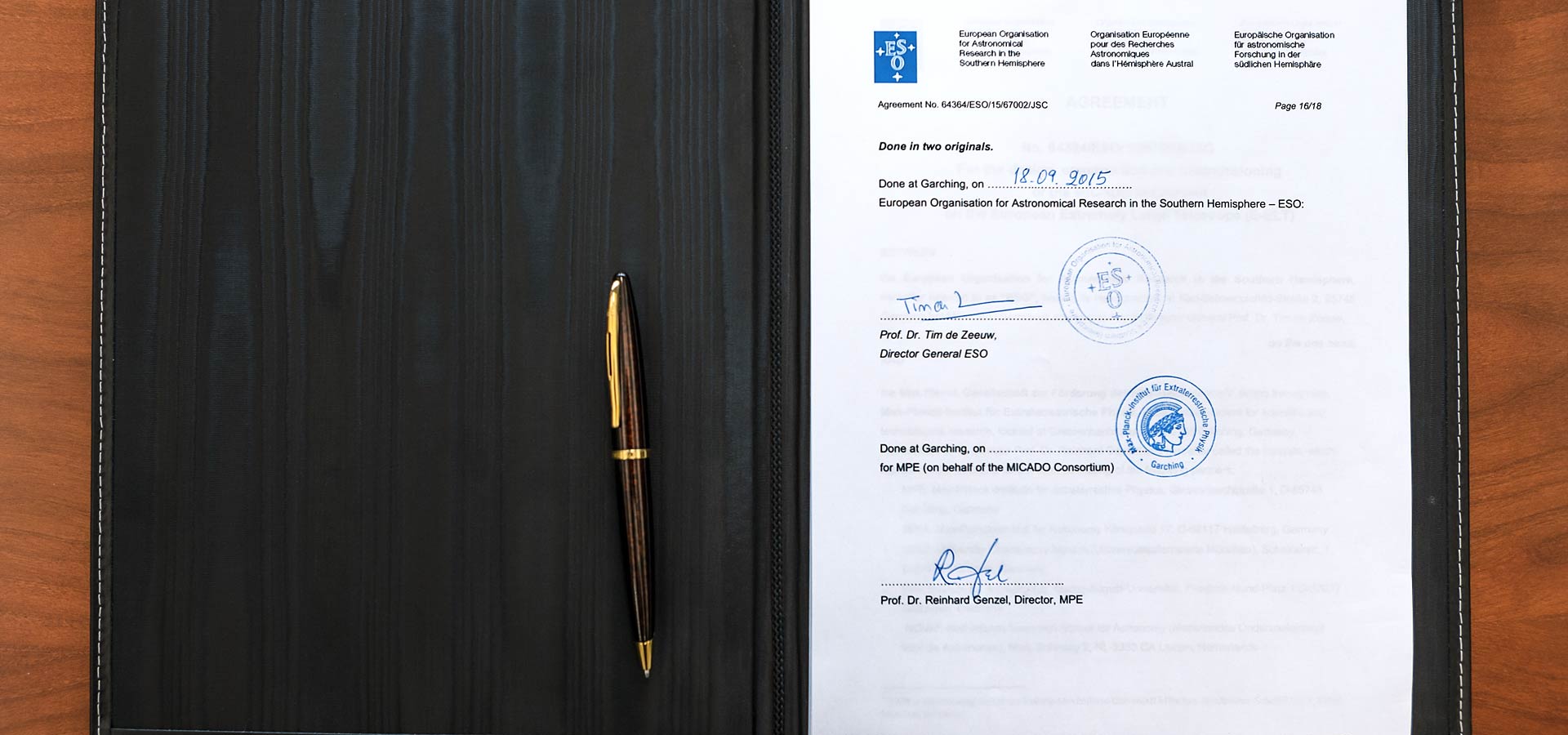
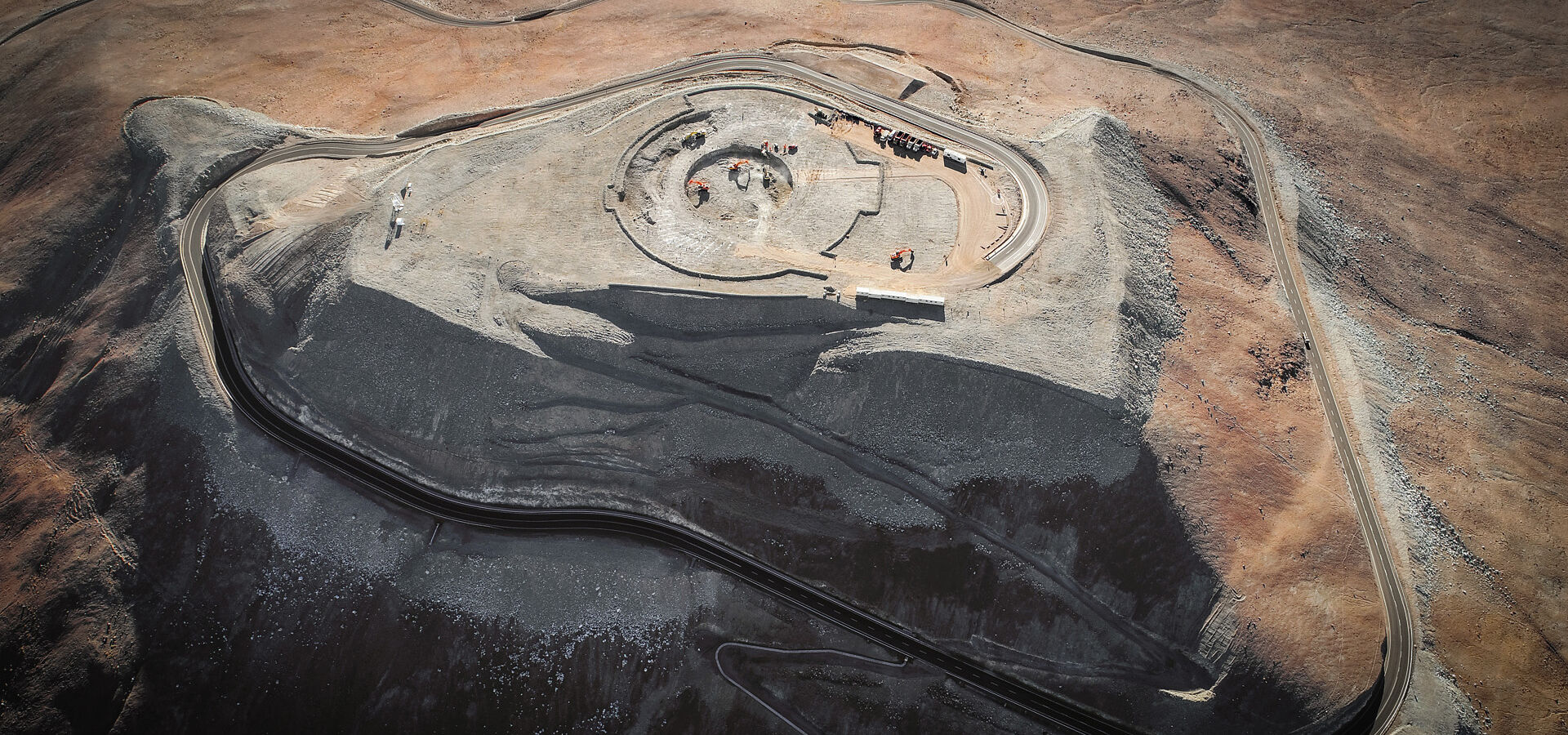
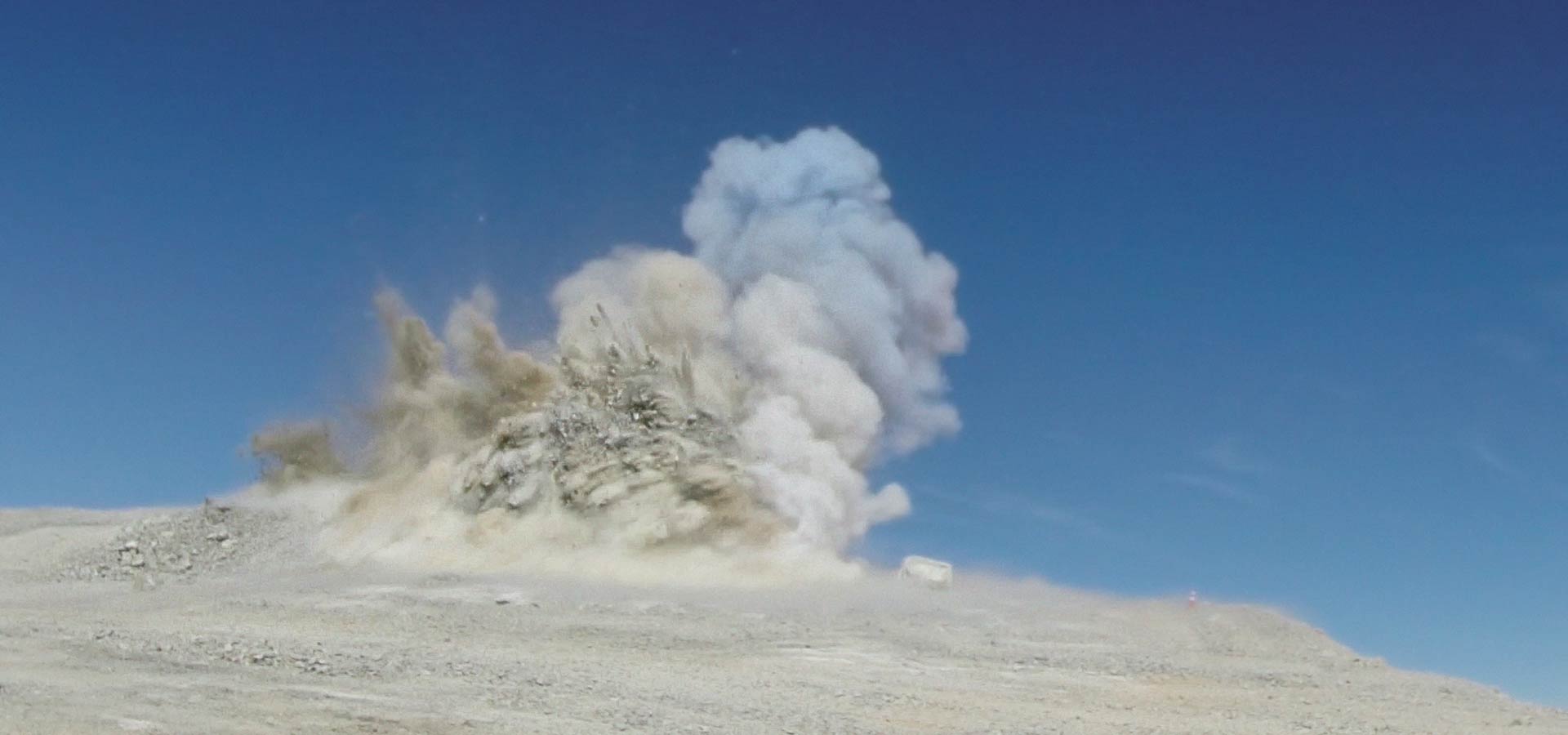

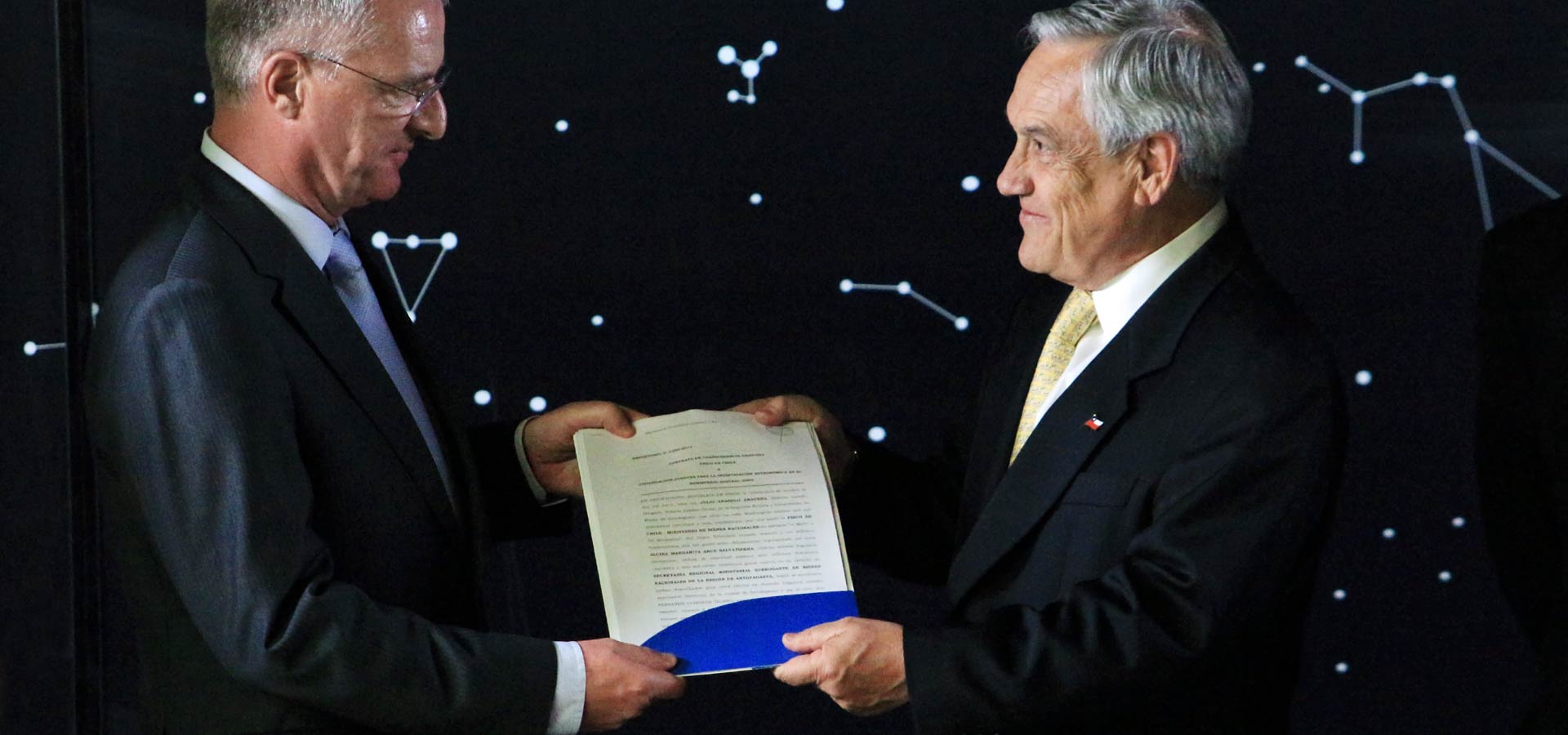
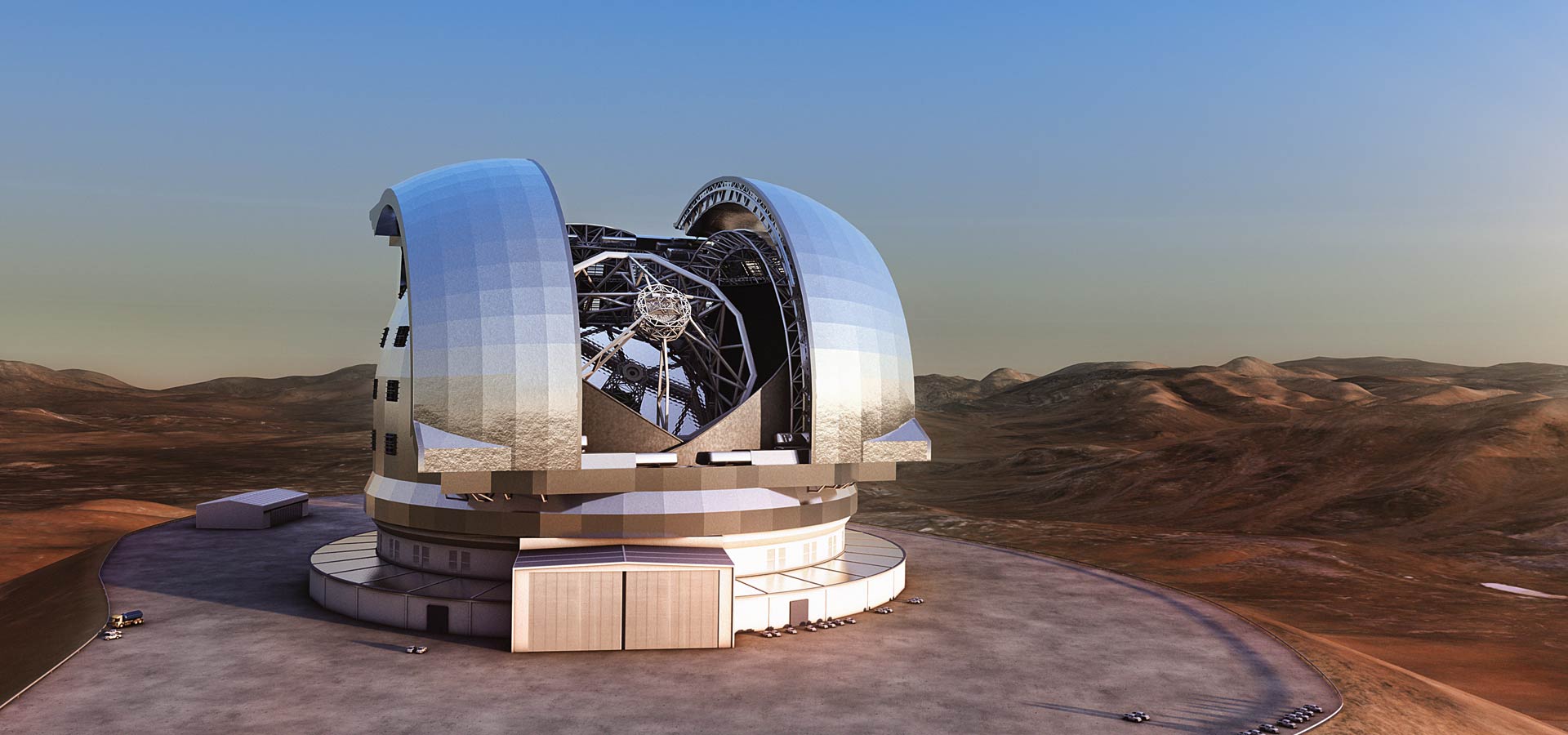
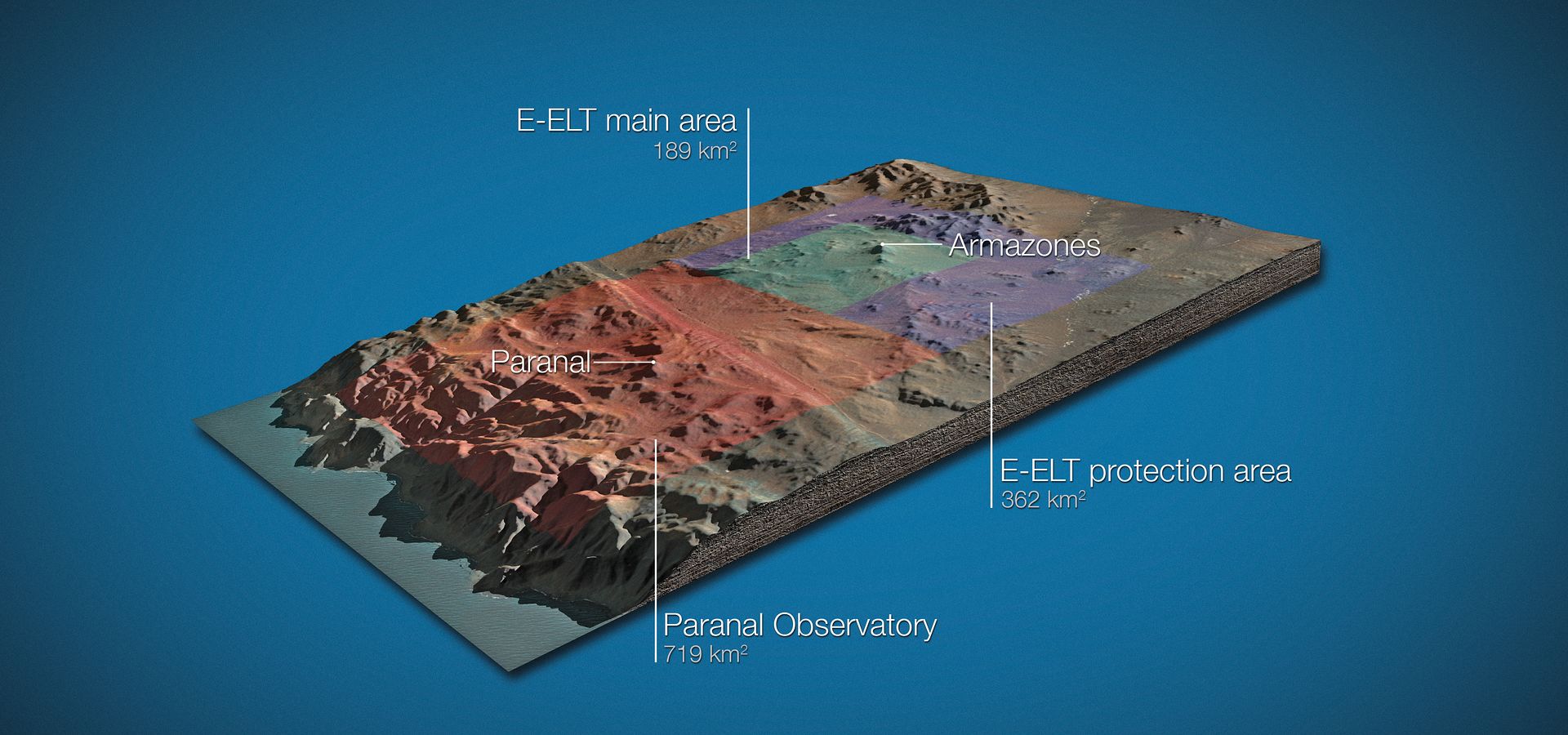
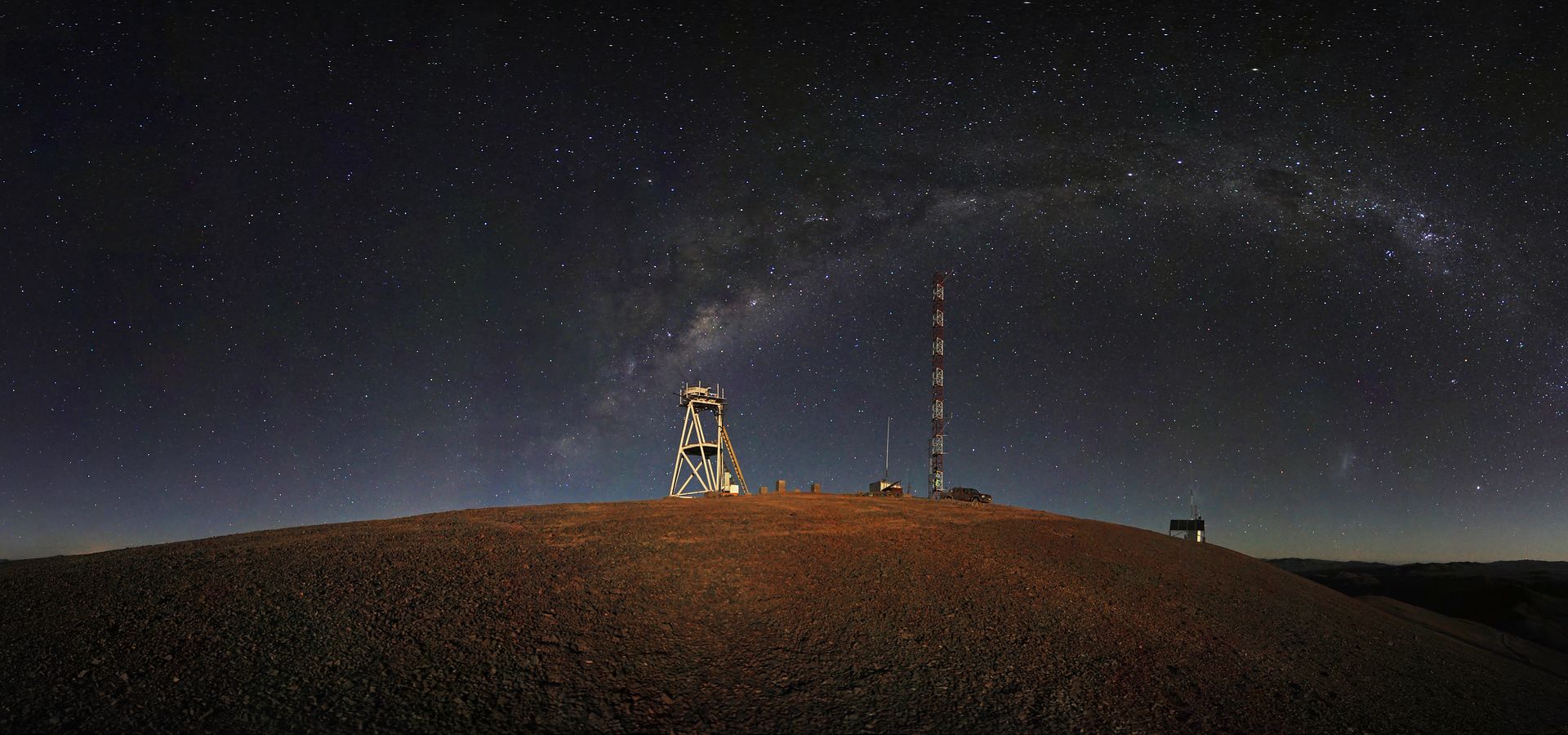
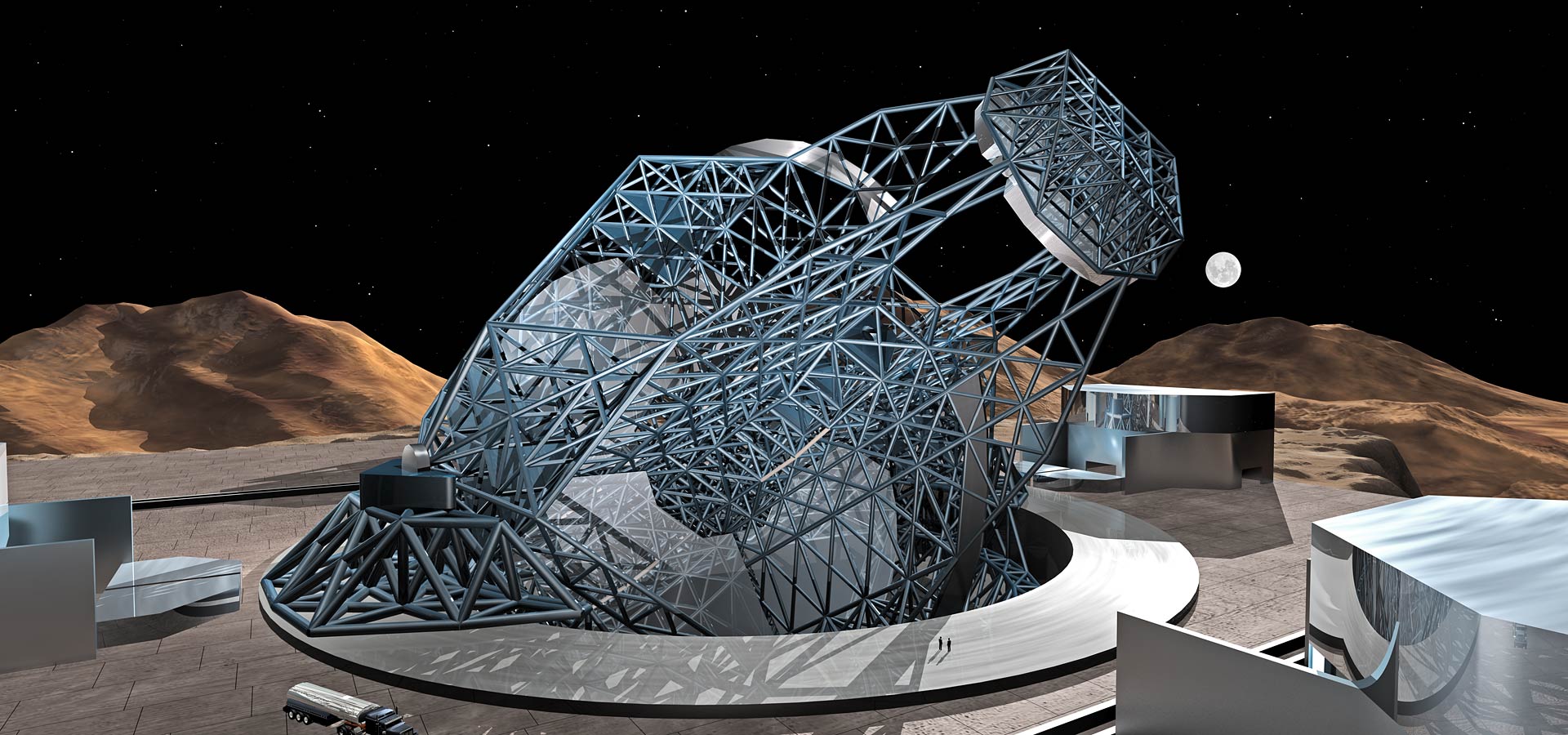
Se espera que las primeras observaciones con instrumentos científicos se realicen en diciembre de 2030.
Está previsto que el ELT realice sus primeras observaciones de prueba a comienzos de 2029.
Se prevé que en 2027 se complete la instalación de los 798 segmentos que conforman el M1, el espejo principal del ELT.
El M5 es el quinto espejo en la trayectoria de la luz del ELT. Con un tamaño de 2,7 x 2,1 metros, es el espejo de corrección rápida (tip-tilt) más grande jamás utilizado en un telescopio.
El M4 es el cuarto espejo en la trayectoria de la luz del ELT y el espejo adaptativo más grande jamás construido, con un diámetro de 2,4 metros.
El M3, el tercer espejo en la trayectoria de la luz del ELT, tiene un diámetro de 3,75 metros.
La cúpula del ELT es la más grande del mundo para un telescopio. Se espera que esté completamente terminada a comienzos de 2027.
La estructura principal del telescopio ELT, que sostendrá sus cinco espejos e instrumentos, se espera que esté terminada a finales de 2026.
Se espera que el espejo secundario del ELT (M2) esté finalizado entre comienzos y mediados de 2025. Con un diámetro de 4,25 metros, el M2 será el más grande de su tipo en el mundo.
Los primeros 18 de los 798 segmentos que componen el espejo primario del ELT llegaron a la Instalación Técnica del ELT en Chile.
En 2023, el ELT superó un hito importante al completarse más del 50% del proyecto.
Fabricado por SCHOTT, el primer bloque en bruto de un segmento del M1 se completó a finales de agosto de 2018. El M1 es el espejo primario del ELT y, una vez terminado, tendrá 39 metros de diámetro y estará compuesto por 798 segmentos.
Se colocaron los primeros cimientos de la obra del ELT en cerro Armazones.
La compañía alemana SCHOTT realizó con éxito la fundición de los primeros segmentos hexagonales para el espejo principal del ELT.
En una ceremonia en Garching bei München, Alemania, ESO firmó contrato con el Consorcio ACe para la estructura de la cúpula y del telescopio.
Se firmó acuerdo para el Sistema Óptico Adaptable MAORY para el ELT, renombrado como MORFEO.
ESO firmó un acuerdo para el diseño y la construcción de METIS.
El consejo administrativo principal de ESO dio luz verde para la construcción del ELT en dos fases.
Se dinamitó parte de la cumbre de 3.000 metros del cerro Armazones como un paso para nivelar la cima en preparación para la construcción del ELT.
Comenzaron las obras civiles para el ELT. La compañía chilena ICAFAL (Ingeniería y Construcción S.A.), comenzó la construcción de un camino a la cima del cerro Armazones.
El presidente de Chile Sebastián Piñera hizo entrega de los documentos legales mediante los cuales el Gobierno de Chile transfirió a ESO los terrenos alrededor al cerro Armazones.
El consejo administrativo de ESO, se reunió en la oficina central de ESO en Garching, Alemania, y votó para dar inicio al programa del ELT.
La República de Chile y ESO firmaron un acuerdo respecto de los terrenos para el ELT, incluida la donación de un área de 189 km² en torno al cerro Armazones para la instalación del telescopio.
El Consejo de ESO eligió el cerro Armazones como el lugar para la instalación del ELT. Se trata de una montaña a una altitud de 3060 metros en la parte central del desierto de Atacama en Chile, unos 130 kilómetros al sur de la ciudad de Antofagasta y unos 23 kilómetros desde el cerro Paranal, hogar del Telescopio Extremadamente Grande de ESO.
We use cookies that are essential for accessing our websites and using our services. We also use cookies to analyse, measure and improve our websites’ performance, to enable content sharing via social media and to display media content hosted on third-party platforms.
The European Organisation for Astronomical Research in the Southern Hemisphere (ESO) is the pre-eminent intergovernmental science and technology organisation in astronomy. It carries out an ambitious programme focused on the design, construction and operation of powerful ground-based observing facilities for astronomy.
This Cookies Policy is intended to provide clarity by outlining the cookies used on the ESO public websites, their functions, the options you have for controlling them, and the ways you can contact us for additional details.
Cookies are small pieces of data stored on your device by websites you visit. They serve various purposes, such as remembering login credentials and preferences and enhance your browsing experience.
Essential cookies (always active): These cookies are strictly necessary for the proper functioning of our website. Without these cookies, the website cannot operate correctly, and certain services, such as logging in or accessing secure areas, may not be available; because they are essential for the website’s operation, they cannot be disabled.
Functional Cookies: These cookies enhance your browsing experience by enabling additional features and personalization, such as remembering your preferences and settings. While not strictly necessary for the website to function, they improve usability and convenience; these cookies are only placed if you provide your consent.
Analytics cookies: These cookies collect information about how visitors interact with our website, such as which pages are visited most often and how users navigate the site. This data helps us improve website performance, optimize content, and enhance the user experience; these cookies are only placed if you provide your consent. We use the following analytics cookies.
Matomo Cookies:
This website uses Matomo (formerly Piwik), an open source software which enables the statistical analysis of website visits. Matomo uses cookies (text files) which are saved on your computer and which allow us to analyze how you use our website. The website user information generated by the cookies will only be saved on the servers of our IT Department. We use this information to analyze www.eso.org visits and to prepare reports on website activities. These data will not be disclosed to third parties.
On behalf of ESO, Matomo will use this information for the purpose of evaluating your use of the website, compiling reports on website activity and providing other services relating to website activity and internet usage.
Matomo cookies settings:
Additional Third-party cookies on ESO websites: some of our pages display content from external providers, e.g. YouTube.
Such third-party services are outside of ESO control and may, at any time, change their terms of service, use of cookies, etc.
YouTube: Some videos on the ESO website are embedded from ESO’s official YouTube channel. We have enabled YouTube’s privacy-enhanced mode, meaning that no cookies are set unless the user actively clicks on the video to play it. Additionally, in this mode, YouTube does not store any personally identifiable cookie data for embedded video playbacks. For more details, please refer to YouTube’s embedding videos information page.
Cookies can also be classified based on the following elements.
Regarding the domain, there are:
As for their duration, cookies can be:
Cookie settings: You can modify your cookie choices for the ESO webpages at any time by clicking on the link Cookie settings at the bottom of any page.
In your browser: If you wish to delete cookies or instruct your browser to delete or block cookies by default, please visit the help pages of your browser:
Please be aware that if you delete or decline cookies, certain functionalities of our website may be not be available and your browsing experience may be affected.
You can set most browsers to prevent any cookies being placed on your device, but you may then have to manually adjust some preferences every time you visit a site/page. And some services and functionalities may not work properly at all (e.g. profile logging-in, shop check out).
The ESO Cookies Policy may be subject to future updates, which will be made available on this page.
For any queries related to cookies, please contact: pdprATesoDOTorg.
As ESO public webpages are managed by our Department of Communication, your questions will be dealt with the support of the said Department.